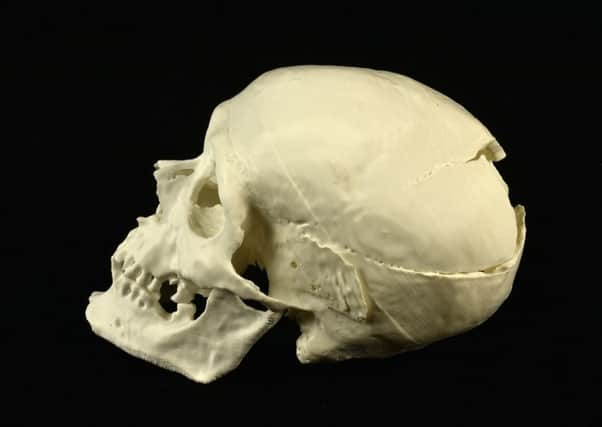Death of Pict man found in Fife revealed


The man, nicknamed Solomon by archaeologists, was killed by five hard blows to the head that were likely delivered from above by a heavy sharp bladed instrument, such as a sword or axe.
He is likely to have been hit from above, with his attacker possibly striking from horseback.
Advertisement
Hide AdAdvertisement
Hide AdSolomon tried to evade his attacker, moving between the first and second strike, but he did not survive the violent encounter which took place sometime between 500 and 700AD.
The man, who was probably in his late thirties or early forties when he died, was buried in an elaborate grave on Lundin Links, with the style of burial suggesting he was respected within the community.
Research carried out by the McManus Art Gallery and Museum in Dundee, Edinburgh University and Aberdeen University is now building a fascinating picture into the life and time of the Pict.
Christina Donald, curator of early history at the McManus, said: “Our man wasn’t an enemy or a criminal. He was someone thought well enough of to be given a respectful burial. He wasn’t just left where he fell.
Advertisement
Hide AdAdvertisement
Hide Ad“At the time that he died, it was too late for the Romans and too early for the Vikings. He may have possibly been attacked by the Northumbrians. Or, he may have been a victim of Pict-on-Pict violence.”
Solomon, who was given the name by those who excavated him, was one of around 20 people buried in the cemetery at Lundin Links, which was exposed during a storm in the 1960s.
There is much evidence of Pictish settlement throughout Fife, which is widely-held to have been once known as the Pictish kingdom of Fib.
The largest hoard of early Pictish silver discovered in Scotland was found at Balman Farm, near Upper Largo, with the treasures dating from 7th Century.
Advertisement
Hide AdAdvertisement
Hide AdSolomon was laid to rest in a ‘double disc’ burial cairn – known as the Dumbbell Complex – which is made up of two circular tombs connected by a rectangular structure.
Solomon was found in one of the circles with woman buried in the adjoining enclosure. Analysis of his skull has show that Solomon was around 5ft 10 tall with a long face, a flaring jaw and a cleft in the chin.
He was also suffering from a range of chronic health problems at the time of his death, Ms Donald said.
“He was really in the prime of his life at the time of his death but he must have been quite below par at the time,” Ms Donald added.
Advertisement
Hide AdAdvertisement
Hide AdThe bones behind his ears are elongated, due to a condition called Eagle syndrome, which might have caused sharp, shooting pain in his jaw and neck. He had a chronic sinus infection as well as dental abscesses. He also suffered from arthritis of the spine and a slipped disc.
Dr Elena Kranioti of the University of Edinburgh’s Unit for Forensic Anthropology, then examined the skull and concluded the man had suffered strikes with a heavy, sharp bladed object, which resulted in fatal injuries.
Links With The Past, which examines the stories of the Solomon and others, is now on show at McManus Art Gallery and Museum, until March 31.